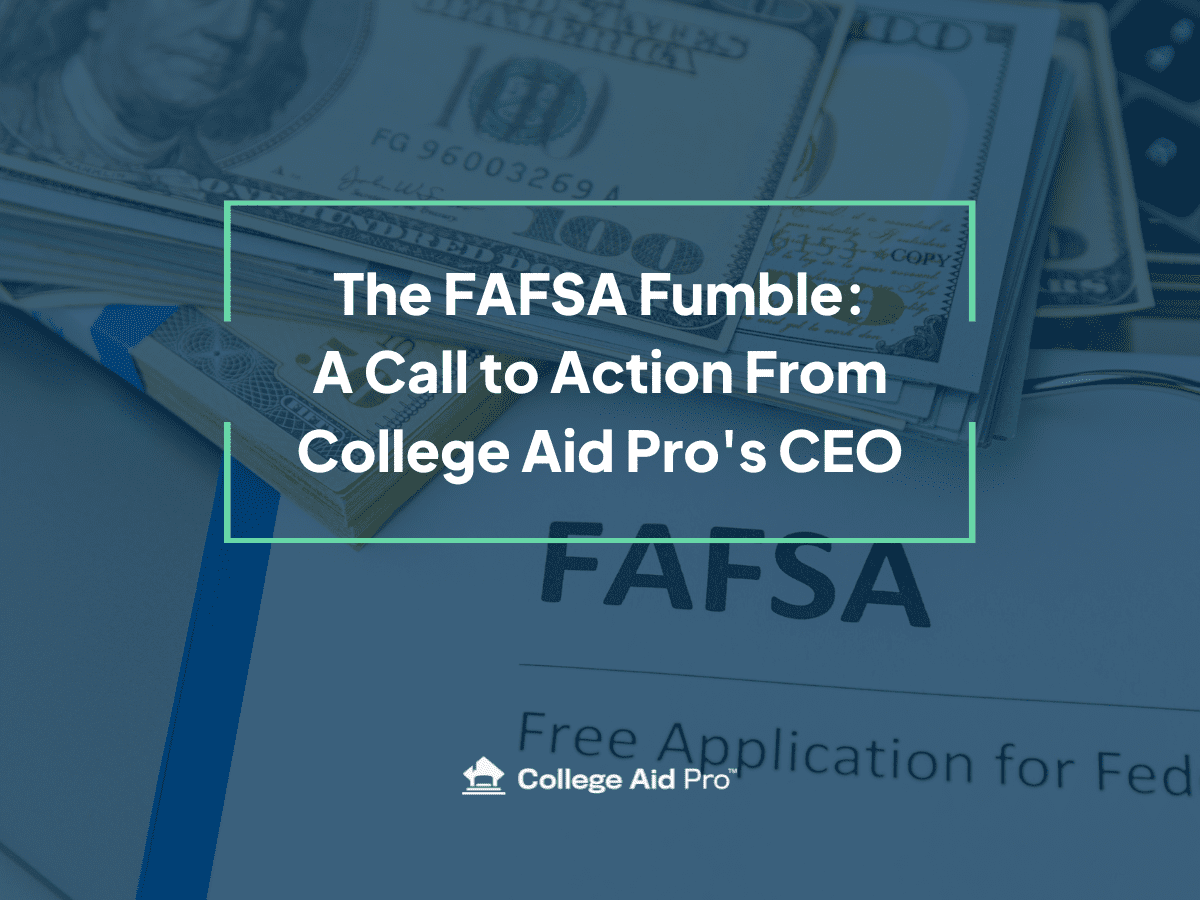When you think about financial aid, “quirky” might not be the first word that comes to mind. However, with something so complex as finances and all the different personal situations for students, you might not be surprised to discover how “quirky” it can be. Let’s dig into the most common FAFSA questions we hear, and how you can navigate your application to maximize financial aid.
Getting It Filed
Just do it! We know it’s not fun, but $2.3 billion in free federal grant money went unclaimed in 2017 because students simply did not file the FAFSA (or did not finish filing it). The FAFSA goes “live” every October 1. Try to have it finished and filed by November 1 to have the best chance at financial aid. Be sure to file the FAFSA every year.
Parents of incoming college freshmen, you should be aware that you do not have to wait until a student is finished submitting their college applications to complete the FAFSA.
Some colleges require the CSS PROFILE application in addition to the FAFSA to qualify for institutional aid. (You can read more about that here.) This form takes significantly more time to complete and asks for much greater detail so be prepared. Most of these schools will also require you to submit additional documentation such as tax returns and statements for your accounts.
The good news is that most schools only require you to fill out the CSS PROFILE in your first year. However, you will still need to file the FAFSA in order to qualify for federal student aid. Be sure to notify the financial aid office if your financial situation changes. You want to be sure you are receiving the aid you qualify for.
Your Family
On the FAFSA, you’ll be asked for the “household size” and the “number of college students in the household.” Why? The number of people living in the home and the number of students in college determine the amount of the Income Protection Allowance. This minimum amount is protected from inclusion in the Expected Family Contribution. It is a minimum amount needed to live. (Although the amount is definitely not enough to live on!)
The “household size” sounds straightforward, but watch out for some trip ups. Always count the applying student even if they do not live at home.
If the student is a dependent (receives more than half their support from their parents), include:
- The parents or if single, separated, divorced, or widowed, the “custodial parent.” The custodial parent is the one the student lives with more than 50% of the year.
- Other dependent siblings (whether or not they live at home).
- Children of the student.
- Other people who live with the parent(s) and receive more than half their support from the parent.
If the student is independent, include:
- The student’s spouse if married (if separated or divorced, do not include).
- The student’s dependent children (whether or not they live at home).
- Other people who live with the student and receive more than half their support from the student.
Do not include foster children. You can include unborn children if they will be born before or during the award year.
Graduate and professional students are independent when filing their own FAFSA; however, they can be considered part of the household for a sibling’s FAFSA if they receive more than half their support from the parents.
When calculating the number of students in college, always count the student who is applying. Also count other siblings in college at the same time. Parents attending college are NOT included.
Sometimes, the financial aid office allows parents to be included in this count if they attend college more than half time.
Your College List
When completing the FAFSA, include all the schools you might apply to. You must list at least one, and you can go up to 10. List all of them now to make sure you don’t miss out on available financial aid by adding colleges later. Don’t forget…first come, first served. You can delete colleges from your list later if you choose to do so.
If you have more than 10 schools you’d like to apply to, list your favorite 10 first (maybe the ones with the earliest financial aid deadlines?). After you submit and receive your Student Aid Report (SAR), you can go back into the FAFSA, delete the original 10, and add up to 10 more.
For federal aid, it doesn’t matter what order you list your schools. For state aid in some states, you must list in order of preference. Also, some states require you to list an in-state school to be eligible. Check this list for your state’s requirements. In Ohio, “the order in which you list the colleges will not impact your eligibility for state aid programs.”
Don’t worry about whether the colleges can see your list and know where you are applying. They can’t (although that wasn’t always the case).
Money Quirks
Let’s start with this…”as of today.” When providing figures about bank balances, the value of investments, etc., use the value “as of today”— not yesterday or when the student starts college.
Fill in all the blanks. Use a zero if an answer doesn’t apply to you.
When reporting savings in 529 plans, be sure to include ALL plans, not just the plan for the current student. The plan amounts for the other siblings are included as well.
Bank accounts (checking, savings, etc.) are counted as assets. Accounts in the student’s name count as a student asset and are assessed at a higher rate (20%). Accounts in a parent’s name are assessed at a lower rate (5.64%).
If a parent’s name is also on the student’s account, the amount of that asset is reported with a 50/50 split—half in the student’s name and half in the parent’s name. (Having assets in the parent’s name is always the best idea to minimize the impact of the higher assessment rate.)
If a parent has their name on a joint account with their parents, those figures must be included too so be aware.
Untaxable income includes (among other things): welfare, disability, Social Security, veteran’s benefits, military or clergy allowances, child support, money received from others. Money received from others can include money gifted by grandparents to help pay for education.
Final Thought…
Don’t forget to sign it! You would be surprised how many forget to use their FSA ID to sign and submit the FAFSA. Parents must sign also if the student is a dependent.
Need help with creating a strategy for applying to college? Sign up for a free MyCAP account today! We’ll help you create a game plan and save on the cost of college.



